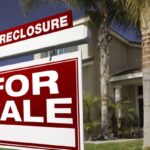You’ve done it. At 57 years old, you’ve cleared the mortgage on your home — a major milestone most Americans only dream about. No more monthly payments looming, no lender breathing down your neck.
But now, with epic timing, your HVAC system decides to give up the ghost with summer just around the corner and your floors look like they’ve survived a small war. Suddenly, you’re faced with a critical question: What’s the smartest way to finance these urgent repairs without jeopardizing your newfound financial freedom?
Don’t miss
- I’m 49 years old and have nothing saved for retirement — what should I do? Don’t panic. Here are 5 of the easiest ways you can catch up (and fast)
- Gain potential quarterly income through this $1B private real estate fund — even if you’re not a millionaire. Here’s how to get started with as little as $10
- Car insurance premiums could spike 8% by the end of 2025 — thanks to tariffs on car imports and auto parts from Canada and Mexico. But here’s how 2 minutes can save you hundreds of dollars right now
In the end, the smartest move balances immediate needs with long-term financial security. Let’s figure it out.
Tapping your home’s hidden wealth
When you own your home outright, one of your strongest financial advantages is the equity you’ve painstakingly built up. That equity can now be your best friend or worst enemy, depending on how you leverage it.
A common go-to solution is the home equity loan, a one-time loan using your house as collateral – typically offering a lump sum at a fixed interest rate.
The beauty of a home equity loan lies in its predictability. Unlike variable-rate financing, you know exactly how much you owe each month, which can make budgeting easier. Home equity loan interest rates are generally lower than unsecured loan options (like personal loans or credit cards) because a borrower’s property secures the loan.
Lenders view these loans as less risky since they can recover their money by foreclosing on the property if the borrower defaults. But home equity loan rates are not always lower than other secured options like home equity lines of credit or cash-out refinances.
Currently, home equity loan rates can sit around 6.990% for a 30-year term, which is relatively high compared to pre-pandemic levels.
But let’s pump the brakes for a second. While a home equity loan sounds attractive, it carries risks. The biggest one? You’re putting your home on the line. Miss payments, and the bank can swoop in and take what you’ve worked decades to fully own.
Any borrowing — home equity loan, credit cards, you name it — is a gamble these days, as your repayments will compete with rising grocery prices and other everyday costs in a tariff environment. It’s crucial to assess your financial stability and realistically consider your ability to handle monthly repayments.
Read more: Thanks to Jeff Bezos, you can now become a landlord for as little as $100 — and no, you don’t have to deal with tenants or fix freezers. Here’s how
Credit cards and personal Loans: Convenience at a price
Maybe you’re tempted to whip out your credit card for the HVAC unit and new flooring. After all, it’s quick, easy and tempting. Credit cards, especially those with rewards, cashback or 0% introductory rates, can offer immediate relief.
If you can snag a card with an introductory period of zero interest, and you’re disciplined enough to pay off the balance before that honeymoon ends, this could be a cost-effective solution. But credit cards can quickly become a financial trap. Interest rates regularly rise above 20% and if you slip up even once, your convenient fix can become a lingering debt monster that chews up your disposable income month after month.
Another path is personal loans, which offer the advantage of unsecured financing, meaning your home isn’t directly at stake. Interest rates for personal loans are typically lower than credit cards but higher than home equity loans.
With fixed monthly payments and predictable terms, personal loans offer clarity without risking your property. But if your credit score isn’t robust, expect unfavorable terms and higher costs.
Choosing the right financial lifeline
Deciding which option is for you begins with closely examining your financial health. How much disposable income do you realistically have each month? If it’s substantial enough to comfortably handle repayments, the predictability and lower rates of a home equity loan could offer the best value. But if you’re wary of placing your home at risk or if the thought of leveraging equity makes you uneasy, personal loans become a safer middle ground, offering transparency without direct stakes in your property.
Next, take a hard look at the repair costs. Is the project extensive, running into tens of thousands, or are we talking about a more manageable sum? For smaller amounts, credit cards — especially those with promotional zero-interest periods — might work if you’re disciplined. If there’s any doubt about your ability to clear the balance quickly, steer clear.
Interest rates and repayment periods matter significantly, too. Compare current rates offered by banks, credit unions and online lenders. Credit unions, in particular, often offer more favorable terms, particularly if you’ve been a long-time member.
Lastly, consider timing. If your HVAC system failed at the worst possible moment, financing might be urgent. But even then, take a beat. You’ve spent years working toward financial security. Protecting your finances means making a calculated decision, not one driven purely by urgency.
What to read next
- Want an extra $1,300,000 when you retire? Dave Ramsey says this 7-step plan ‘works every single time’ to kill debt, get rich in America — and that ‘anyone’ can do it
- Here are 5 ‘must have’ items that Americans (almost) always overpay for — and very quickly regret. How many are hurting you?
- Do you rely on your monthly Social Security check to get by? Here are 5 simple money moves for American seniors during Trump’s presidency
This article provides information only and should not be construed as advice. It is provided without warranty of any kind.








